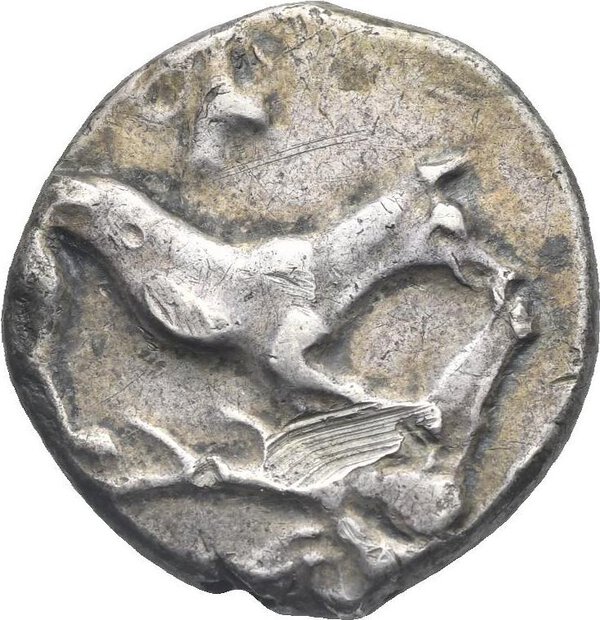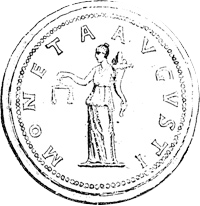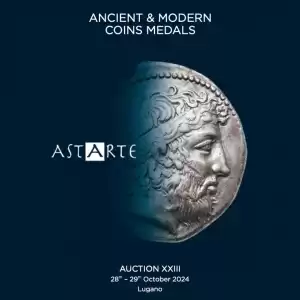





Sicily. Motya or Panormos. Circa 415-405 BC. Punic Didrachm featuring Segestan types (Silver, 20.81 mm, 8.14 g). Hound right standing on stag’s head and seizing it by the nose; above, small female head right. Rev. Head of Nymph right; on the left, ivy-leaf. Jenkins, Coins of Punic Sicily, Part I (Swiss Numismatic Review Vol. 50, 1971), Motya II series, pl. 4.35 (O18/R22 - this coin). Cfr. Gabrici, La monetazione del bronzo nella Sicilia antica, p. 46 (argumenting for Panormos). Old cabinet tone. Scratch on obverse and scattered marks. Very Fine. Extremely Rare.
Ex G. de Ciccio Collection, Sambon & Canessa, 19 December 1907, lot 258.
The Punic didrachm series was minted during a turbulent period in Sicilian history. After the Syracusans defeated the Athenians in 413 BC, Selinos resumed its conflict with Segesta in 410 BC. Facing renewed threats, the Elimian Segesta sought Carthaginian support, which led to Carthage subjugating Segesta and destroying both Selinos and Himera. This aggressive expansion alarmed the rest of Greek Sicily, but having just expelled the Athenians, they hesitated to intervene. The situation escalated when Hermocrates, a Syracusan exile, raided Punic territories in 407 BC, triggering a prolonged war that culminated in the destruction of cities like Akragas and Motya. In this context, the didrachm series, produced by the Siculo-Punic cities of Motya and Panormos, was likely used to fund Carthage's massive military efforts in Sicily. Segesta, newly under Carthaginian control and experienced in minting didrachms, probably played a key role in this production, as evidenced by die-sharing with Motya and Panormos. The presence of hybrid coins combining dies from these cities suggests a central mint, though its location is debated. While Jenkins and Hurter propose Panormos, Rutter argues convincingly for Segesta, which, considering the historical circumstances, seems the most plausible location."


